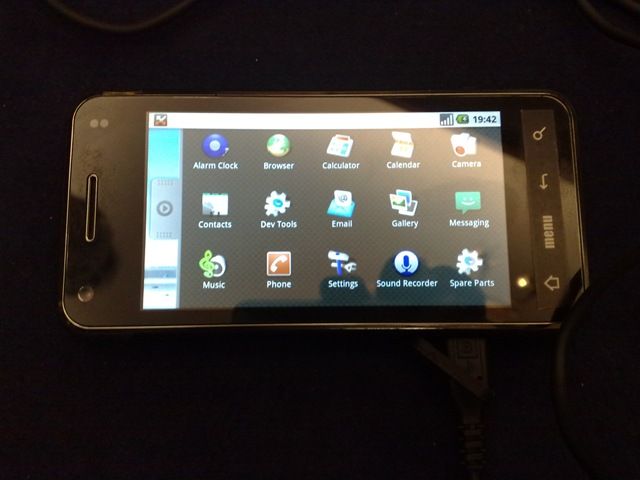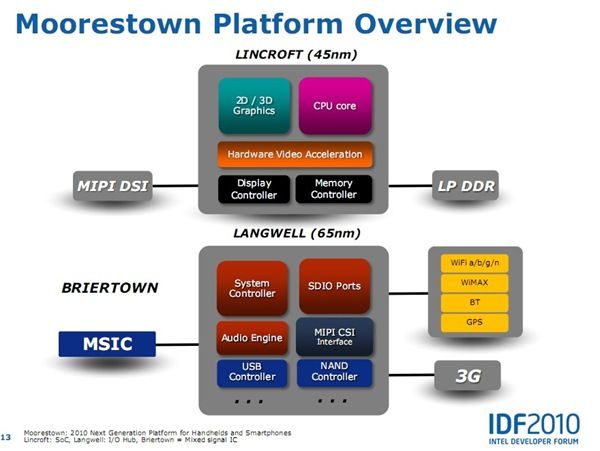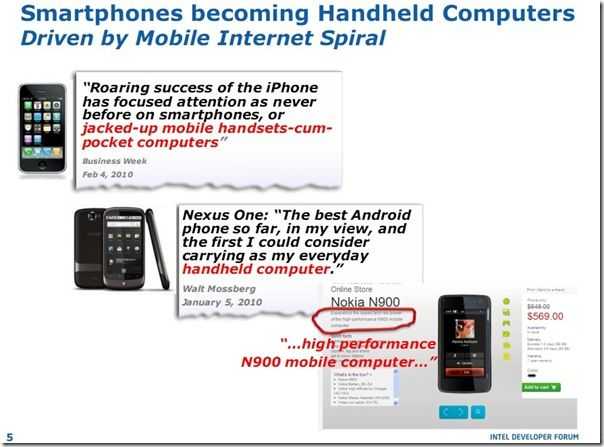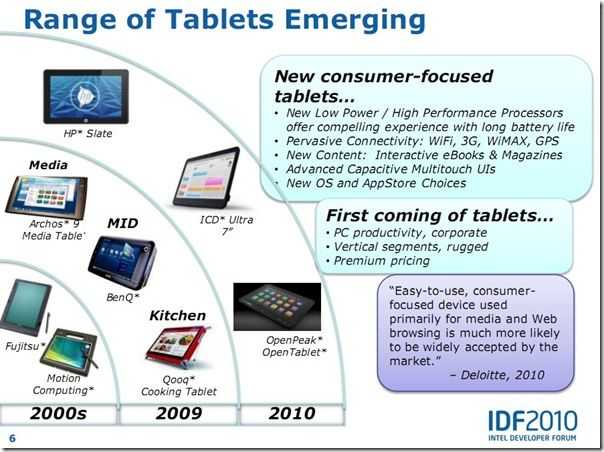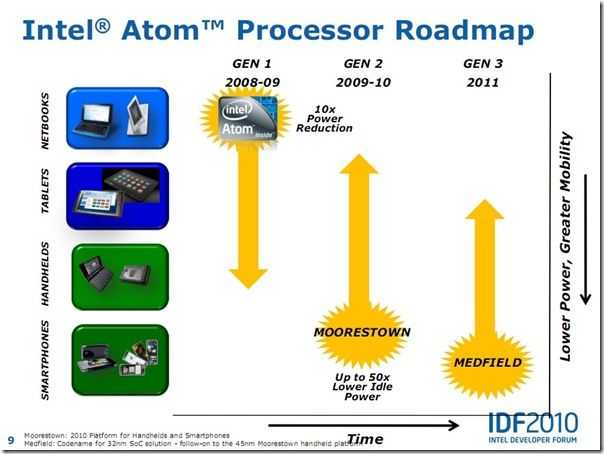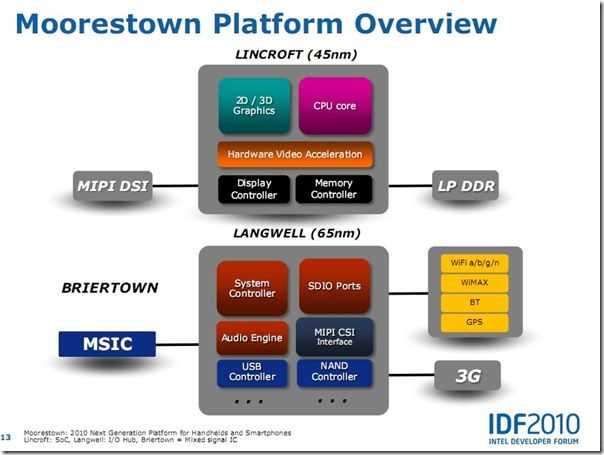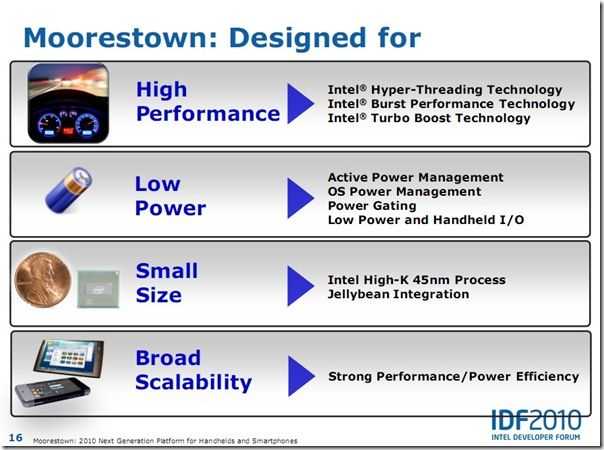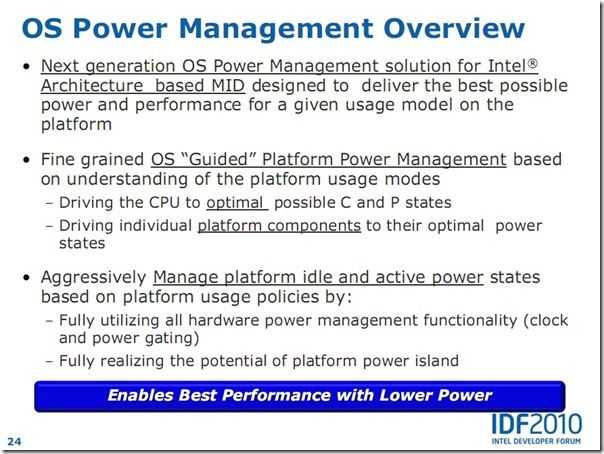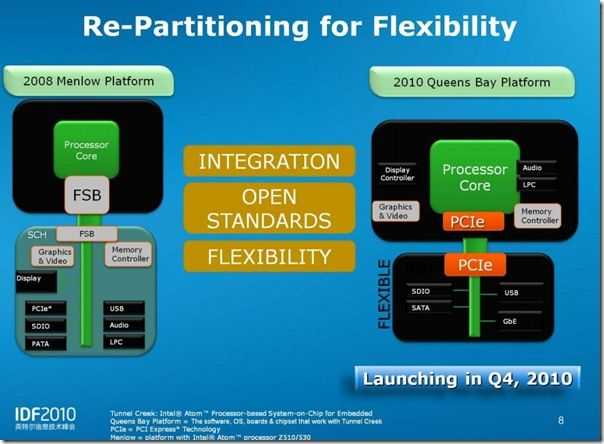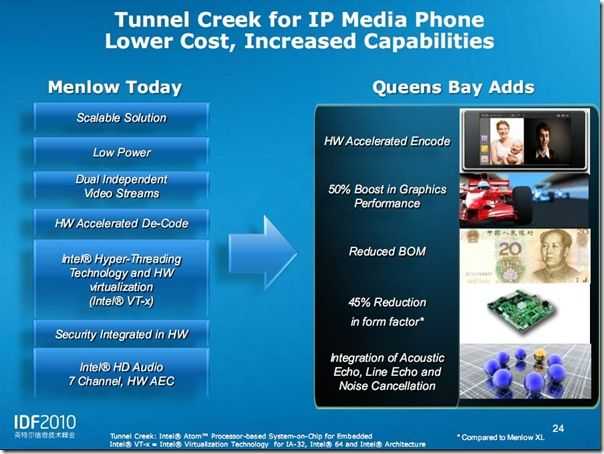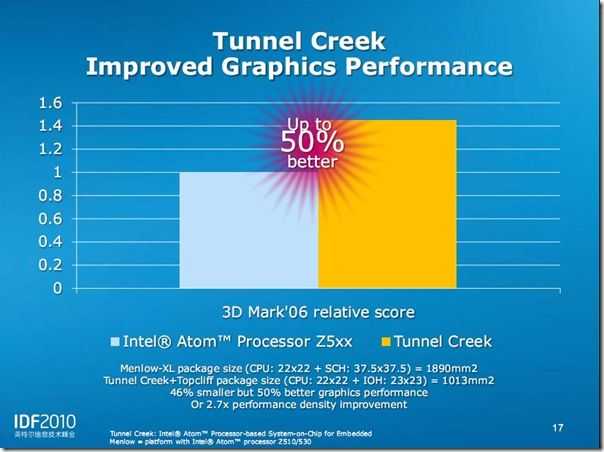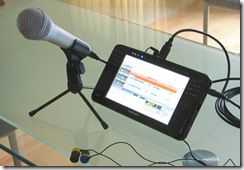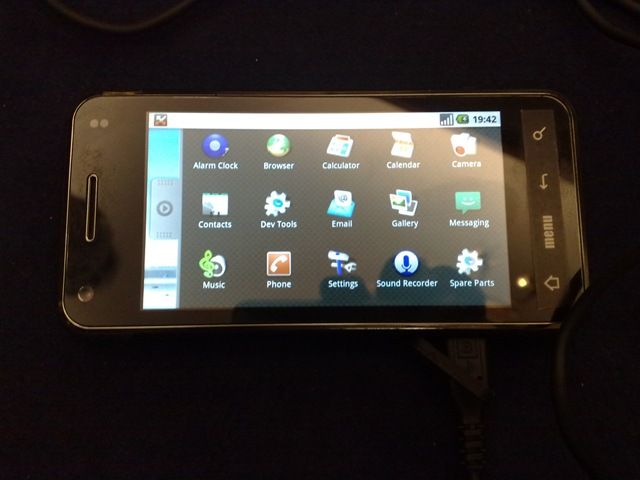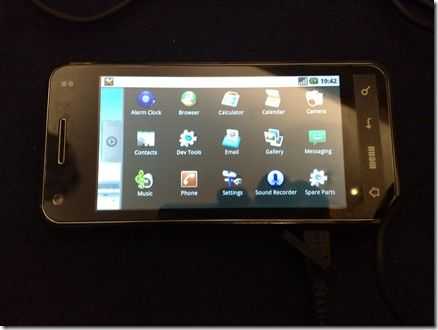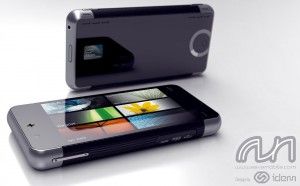Intel have just released an news about their smartphone and tablet platform previously known as Moorestown. The platform is a follow-on from the MID-focused platform, Menlow and includes power saving and power-boosting features that could see service in some very high-end smart devices. The processing unit is known as the Z6XX (assume there will be variants) and the control unit is known as MP20.
I’ve done some analysis of the news over at UMPCPortal but here’s a summary.
Collectively these new chips deliver significantly lower power including >50x reduction in idle power, >20x reduction in audio power, and 2-3x reductions across browsing and video scenarios all at the platform level when compared to Intel’s previous-generation product1. These power savings translate into >10 days of standby, up to 2 days of audio playback and 4-5 hours of browsing and video battery life. When combined with 1.5-3x higher compute performance, 2-4x richer graphics, >4x higher JavaScript performance, and support for full HD 1080p high-profile video decoding and 720p HD video recording, these low-power innovations bring a rich, PC-like visual experience to powerful handheld computers.
So you’ve got some new power-saving technology there that should allow devices to be built around a standard 1500mah battery but that’s not all.
These power management capabilities, when combined with Intel® Burst Performance Technology for high-performance on demand, and Intel’s Bus Turbo Mode for high-bandwidth on demand, help to deliver industry leading performance and power efficiency across a range of handheld devices.
These ‘turbo’ features will take the platform to 1.5Ghz and there’ll even be a version that will boost to 1.9Ghz. That’s more than a netbook! So if you add the low-power idle features with the turbo modes you’ve got a platform that spans a wide range of uses. With MeeGo being developed alongside Moorestown and a wave of interest in ‘smart’ devices, Intel have timed it well. 
The press release even mentions Android. We saw it back in Feb but it looks like it’s become a core part of the Moorestown strategy now.
Here’s the video of Android running on a Moorestown smartphone from MWC in Feb.
Additional info: What Moorestown Means for Consumers.
We’re with Intel at Computex next month (I’ve been invited to Computex through the Intel Insider program) where I’m sure we’ll hear about launch dates, devices and a whole lot more. Expect videos and hands-on!

